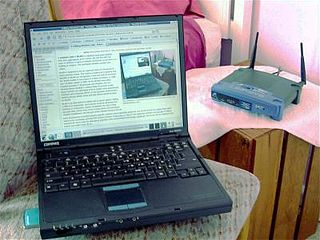Modern telecommunications in Thailand began in 1875 with the deployment of the first telegraph service. Historically, the development of telecommunication networks in Thailand were in the hands of the public sector. Government organisations were established to provide telegraph, telephone, radio, and television services, and other government agencies, especially the military, still control a large estate of radio and television spectra. Private telecommunication operators initially acquired concession agreements with state enterprises. For mobile phone services, all the concessions have been amended by successive government to last 25 years have gradually ended in 2015. For other services, the concession terms and conditions vary, ranging from one to fifteen years. Nearly all of the concessions are build-operate-transfer (BTO) contracts. The private investor has to build all the required facilities and transfer them to the state before they can operate or offer services to public.

Ultra high frequency (UHF) is the ITU designation for radio frequencies in the range between 300 megahertz (MHz) and 3 gigahertz (GHz), also known as the decimetre band as the wavelengths range from one meter to one tenth of a meter. Radio waves with frequencies above the UHF band fall into the super-high frequency (SHF) or microwave frequency range. Lower frequency signals fall into the VHF or lower bands. UHF radio waves propagate mainly by line of sight; they are blocked by hills and large buildings although the transmission through building walls is strong enough for indoor reception. They are used for television broadcasting, cell phones, satellite communication including GPS, personal radio services including Wi-Fi and Bluetooth, walkie-talkies, cordless phones, satellite phones, and numerous other applications.

A radiotelephone, abbreviated RT, is a radio communication system for conducting a conversation; radiotelephony means telephony by radio. It is in contrast to radiotelegraphy, which is radio transmission of telegrams (messages), or television, transmission of moving pictures and sound. The term is related to radio broadcasting, which transmit audio one way to listeners. Radiotelephony refers specifically to two-way radio systems for bidirectional person-to-person voice communication between separated users, such as CB radio or marine radio. In spite of the name, radiotelephony systems are not necessarily connected to or have anything to do with the telephone network, and in some radio services, including GMRS, interconnection is prohibited.

The telecommunications policy of the United States is a framework of law directed by government and the regulatory commissions, most notably the Federal Communications Commission (FCC). Two landmark acts prevail today, the Communications Act of 1934 and the Telecommunications Act of 1996. The latter was intended to revise the first act and specifically to foster competition in the telecommunications industry.
The aircraft emergency frequency is a frequency used on the aircraft band reserved for emergency communications for aircraft in distress. The frequencies are 121.5 MHz for civilian, also known as International Air Distress (IAD), International Aeronautical Emergency Frequency, or VHF Guard, and 243.0 MHz—the second harmonic of VHF guard—for military use, also known as Military Air Distress (MAD), NATO Combined Distress and Emergency Frequency, or UHF Guard. Earlier emergency locator transmitters used the guard frequencies to transmit. As of February 1, 2009 satellite monitoring of the 121.5 and 243 MHz ELT (EPIRB) frequencies ceased, whereas an additional band from 406.0 to 406.1 MHz is now used exclusively by modern emergency locator transmitters (EPIRB).
Aeronautical Radio, Incorporated (ARINC), established in 1929, was a major provider of transport communications and systems engineering solutions for eight industries: aviation, airports, defense, government, healthcare, networks, security, and transportation. ARINC had installed computer data networks in police cars and railroad cars and also maintains the standards for line-replaceable units.
In the U.S., Federal Communications Commission (FCC) regulations prohibit the use of mobile phones aboard aircraft in flight. Contrary to popular misconception, the Federal Aviation Administration (FAA) does not actually prohibit the use of personal electronic devices on aircraft. Paragraph (b)(5) of 14 CFR 91.21 permits airlines to determine if devices can be used in flight, allowing use of "any other portable electronic device that the operator of the aircraft has determined will not cause interference with the navigation or communication system of the aircraft on which it is to be used."
LiveTV was a major provider of airline in-flight entertainment systems. Originally a joint venture of Harris Corporation and BE Aerospace, it was a wholly owned subsidiary of JetBlue Airways Corporation from its acquisition in 2002 until its sale to Thales in 2014. It had its headquarters in Melbourne, Florida.
A broadcast license is a type of spectrum license granting the licensee permission to use a portion of the radio frequency spectrum in a given geographical area for broadcasting purposes. The licenses generally include restrictions, which vary from band to band.

A spectrum auction is a process whereby a government uses an auction system to sell the rights to transmit signals over specific bands of the electromagnetic spectrum and to assign scarce spectrum resources. Depending on the specific auction format used, a spectrum auction can last from a single day to several months from the opening bid to the final winning bid. With a well-designed auction, resources are allocated efficiently to the parties that value them the most, the government securing revenue in the process. Spectrum auctions are a step toward market-based spectrum management and privatization of public airwaves, and are a way for governments to allocate scarce resources.

Airfone was an air-ground radiotelephone service developed by MCI founder John D. Goeken, and operated under the names Airfone, GTE Airfone, and Verizon Airfone. Airfone allowed passengers to make telephone calls in-flight. Airfone handsets were often located in the middle airliner seatbacks, with two handsets per row for 6-wide coach seating configurations, and more or less depending on the aircraft layout and fare class. First class cabins typically had one handset per seat. Some planes had one or more bulkhead mounted phone stations with cordless handsets that the passengers could use, instead of the multiple wired handsets. Airfone phone calls were usually quite expensive compared to ground-based telephone calls, costing $3.99 per call and $4.99 per minute in 2006.

MediaFLO was a technology developed by Qualcomm for transmitting audio, video and data to portable devices such as mobile phones and personal televisions, used for mobile television. In the United States, the service powered by this technology was branded as FLO TV.
Cellular frequencies in the United States are allocated by the US Federal Communications Commission. As cellular mobile telephone technology has evolved over time, periodically bands of frequencies are reassigned from other radio services. Companies wishing to provide cellular services in a geographic region compete for the right to license radio spectrum in spectrum auctions. Different cellular companies in the same region may use different levels of cellular technology and different parts of the radio spectrum. In addition to radio frequencies used to connect handsets with cellular base stations, other parts of the radio spectrum are used to interconnect base stations and the wired telephone network. Some frequency bands may be vulnerable to interference by existing services in adjacent frequency bands, such as UHF television broadcasting.

Inmarsat is a British satellite telecommunications company, offering global mobile services. It provides telephone and data services to users worldwide, via portable or mobile terminals which communicate with ground stations through fifteen geostationary telecommunications satellites.
The United States 700 MHz FCC wireless spectrum auction, officially known as Auction 73, was started by the Federal Communications Commission (FCC) on January 24, 2008 for the rights to operate the 700 MHz radio frequency band in the United States. The details of process were the subject of debate among several telecommunications companies, including Verizon Wireless, AT&T Mobility, as well as the Internet company Google. Much of the debate swirled around the open access requirements set down by the Second Report and Order released by the FCC determining the process and rules for the auction. All bidding was required by law to commence by January 28.

Gogo Business Aviation is a division of Gogo Inflight Internet is a provider of in-flight broadband Internet service and other connectivity services for business aircraft. It is headquartered in Broomfield, CO.

Nextel Communications, Inc. was an American wireless service operator that merged with and ceased to exist as a subsidiary of Sprint Corporation, which would later be bought by T-Mobile US and folded into that company. Nextel in Brazil, and formerly in Argentina, Chile, Peru, the Philippines, and Mexico, is part of NII Holdings, a stand-alone, publicly traded company not owned by Sprint Corporation.

Gogo Inc. is an American provider of in-flight broadband Internet service and other connectivity services for business aircraft, headquartered in Broomfield, Colorado. Through its Gogo LLC subsidiary, Gogo previously provided in-flight WiFi to 17 airlines until the Commercial Air business was sold to Intelsat for $400 million in December 2020. According to Gogo, over 2,500 commercial aircraft and 6,600 business aircraft have been equipped with its onboard Wi-Fi services. The company is the developer of 2Ku, new in-flight satellite-based Wi-Fi technology rolled out in 2015.
The digital dividend refers to the radio spectrum which is released in the process of digital television transition. When television broadcasters switch from analog TV to digital-only platforms, part of the electromagnetic spectrum that has been used for broadcasting will be freed-up because digital television needs less spectrum than analog television, due to lossy compression. One reason is that new digital video compression technology can transmit numerous digital subchannels using the same amount of spectrum used to transmit one analog TV channel. However, the primary reason is that digital transmissions require much less of a guard band on either side, since they are not nearly as prone to RF interference from adjacent channels. Because of this, there is no longer any need to leave empty channels to protect stations from each other, in turn allowing stations to be repacked into fewer channels, leaving more contiguous spectrum to be allocated for other wireless services.

The C band is a designation by the Institute of Electrical and Electronics Engineers (IEEE) for a portion of the electromagnetic spectrum in the microwave range of frequencies ranging from 4.0 to 8.0 gigahertz (GHz). However, the U.S. Federal Communications Commission C band proceeding and auction, designated 3.7–4.2 GHz as C band. The C band is used for many satellite communications transmissions, some cordless telephones, as well as some radar and weather radar systems.









